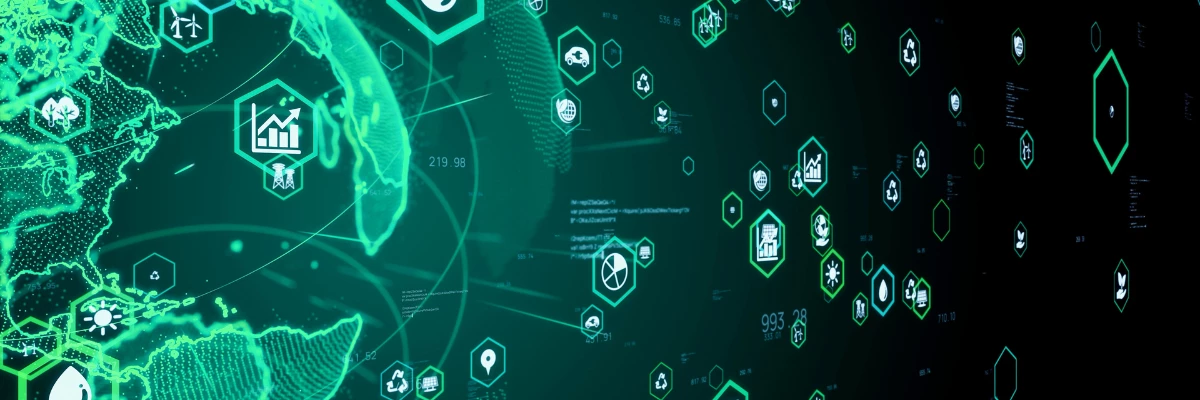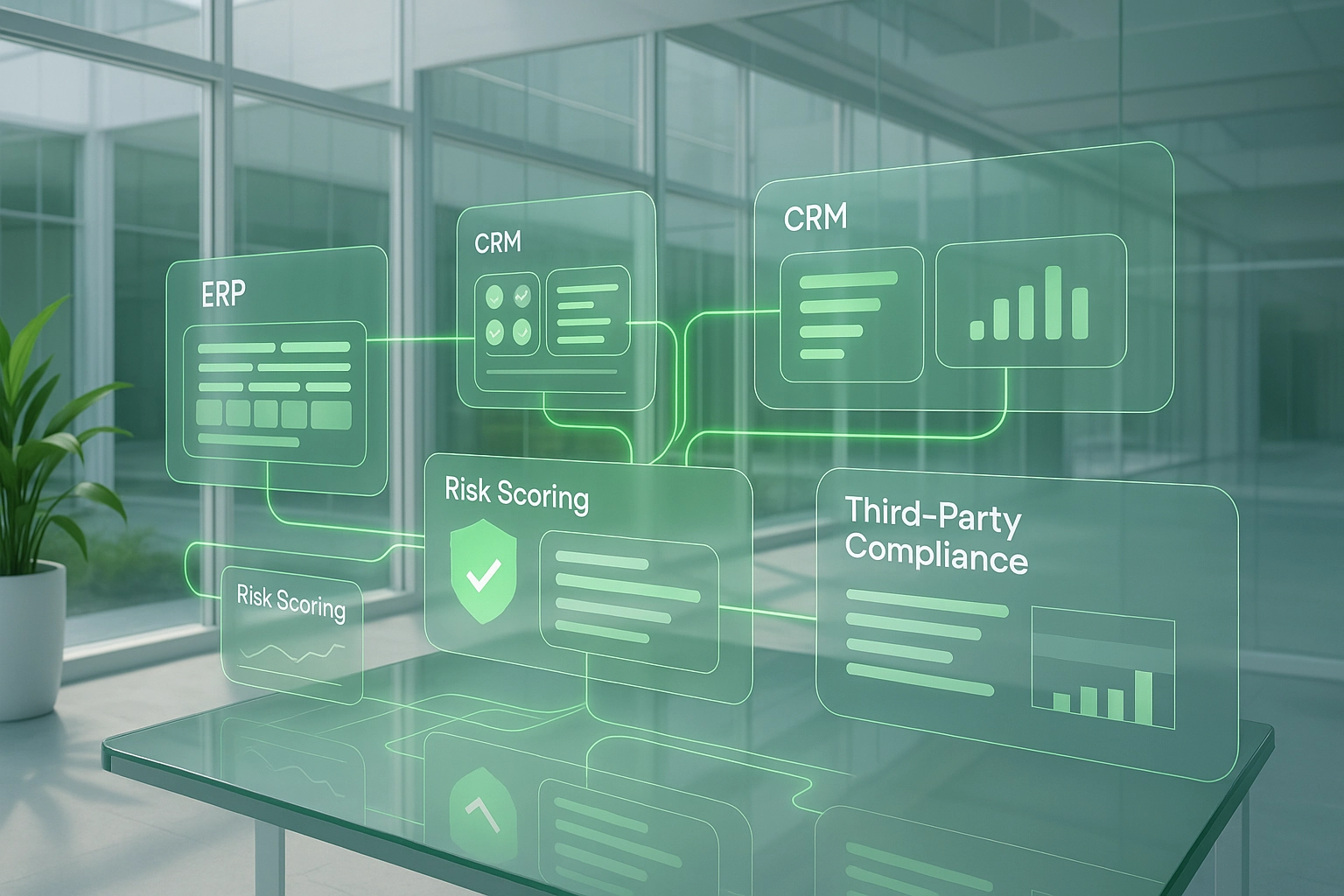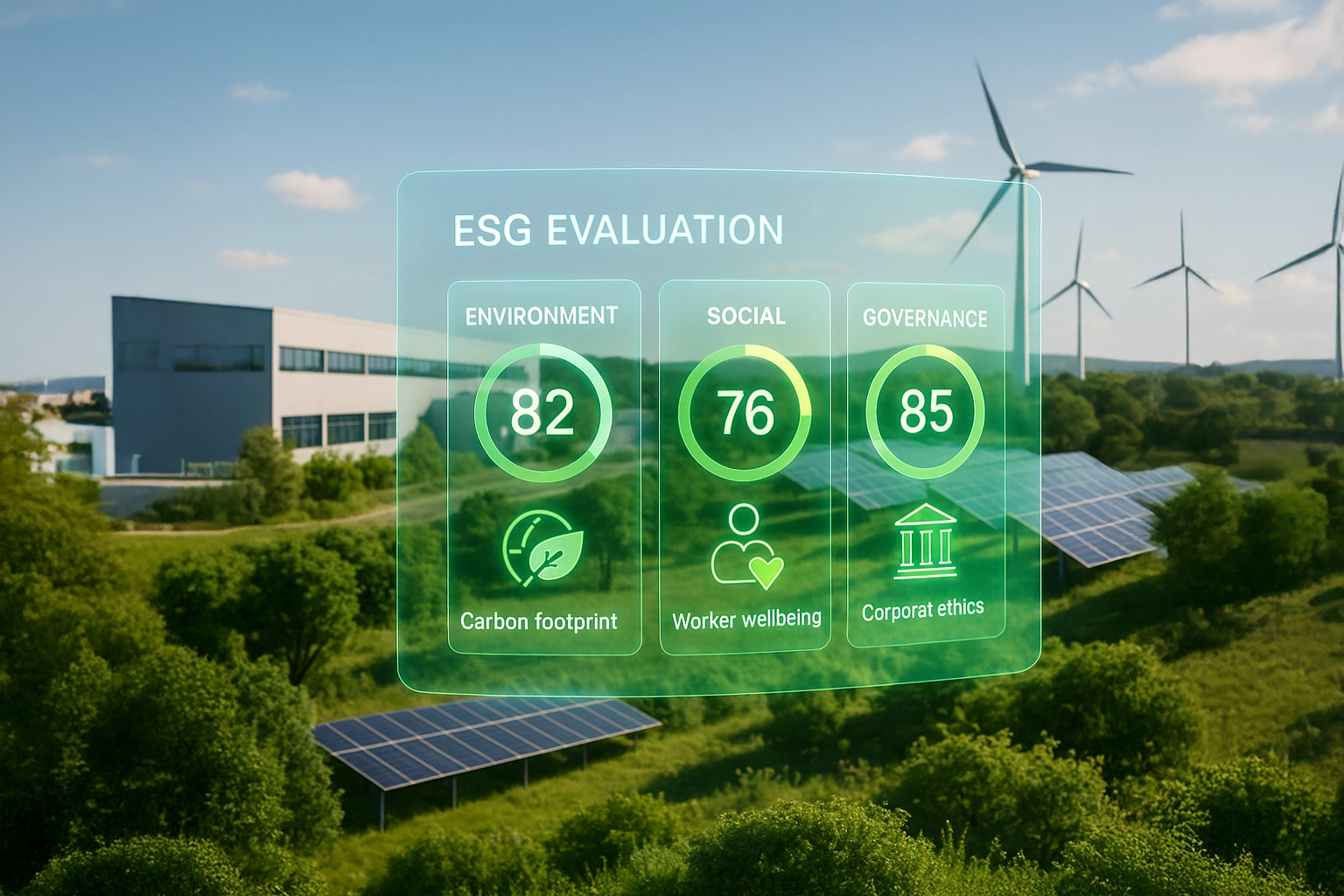Maximizing the Impact of Dynamic Risk Scoring: Monitoring and Personalization for Effective Third-Party Risk Management

In our previous article, we explored the fundamentals of dynamic risk scoring and its essential role in evolving third-party governance practices. This innovative approach, leveraging real-time data and sophisticated analytical models, is profoundly transforming the way organizations assess their third-party partners.
As European regulatory requirements tighten with DORA, NIS 2, and the convergence of CSRD/Duty of Vigilance, organizations must maximize the impact of their collaborative assessment systems. This optimization is achieved through three complementary pillars: continuous monitoring to anticipate emerging risks, customization tailored to sector-specific requirements, and proactive adaptation to regulatory challenges.
For the 430,000 third parties managed on the Aprovall platform in Europe, these elements form the foundation of enhanced operational resilience in the face of a constantly evolving economic and regulatory environment.
Continuous Monitoring Through Dynamic Risk Scoring
A significant advantage of integrating dynamic risk scoring is the ability to perform continuous collaborative assessment of third-party partners. This strategy ensures an immediate response to fluctuations detected in risk indicators and enables prompt adjustment of third-party governance strategies.
Continuous assessment fundamentally transforms the relationship with third parties by replacing periodic audits with ongoing dialogue based on up-to-date data.
This process greatly enhances operational resilience by allowing organizations to anticipate potential issues before they become critical. In the industrial sector, for example, continuous monitoring of partners involved in ICPE compliance ensures immediate detection of any regulatory status change or environmental incident, thereby avoiding costly supply chain interruptions.
Benefits for Fraud Prevention
Fraud prevention is one of the areas where dynamic scoring demonstrates exceptional value. Real-time analytics make it possible to quickly identify irregularities in third-party behavior, whether in documentation anomalies or suspicious transactions.
According to Fraud.com, “this technique uses statistics, machine learning, and artificial intelligence to accurately assess and continuously update the changing strategies of fraudsters”. Dynamic risk scoring thus serves as an early warning system, enabling organizations to detect and mitigate potential risks before they escalate into serious threats.
Key benefits for fraud prevention include:
- Early detection: Rapid identification of potential threats, allowing swift action to prevent fraudulent activities.
- Reduction of false positives: Improved accuracy in anomaly detection, avoiding accidental restrictions on legitimate partners.
- Efficient resource allocation: Automation and prioritization of high-risk transactions, reducing the need for manual reviews.
In the construction sector, this method is particularly relevant for certifying contractors. A large construction group can continuously monitor the validity of its subcontractors’ certifications (EN 1090, professional qualifications, etc.) and immediately detect any anomaly or expiration, thus preventing non-compliance risks on sites.
This advanced analytical capability is particularly valuable in third-party governance, where the complexity of relationships and diversity of risks require a sophisticated and nuanced methodology. By adopting such a strategy, organizations not only protect their financial assets but also strengthen their reputation—a critical factor in an increasingly demanding economic and regulatory landscape.
Customer Risk Monitoring via Dynamic Scoring
A crucial component of dynamic risk scoring is the continuous evaluation of third-party risk profiles. This continuous collaborative assessment allows organizations to adapt third-party governance strategies according to evolving behaviors and risk indicators.
According to a LeanPay study, “organizations that implement dynamic customer risk assessment can identify significant changes in third-party behavior up to 70% faster”. This anticipation capability is essential for maintaining operational resilience in rapidly changing economic and regulatory environments.
In the retail sector, this approach is particularly relevant for managing international marketplaces. A major retailer can continuously monitor compliance indicators for third-party sellers across different e-commerce platforms, integrating parameters specific to each country. By quickly identifying sellers at risk of non-compliance with health standards or multi-country e-commerce regulations, the retailer avoids potentially costly financial and reputational incidents.
Mutualized “Pay-to-Collect” Model
Dynamic risk scoring relies on a collaborative model that encourages data pooling among ecosystem stakeholders. This methodology, adopted by Aprovall for its 430,000 global third parties, significantly reduces “supplier fatigue” by avoiding redundant information requests.
According to Microsoft Purview, “risk management strategies determine the targeted users and the types of risk indicators configured for alerts”. In a mutualized model, these indicators are shared among stakeholders, enabling more complete and accurate risk assessment.
This collaborative model is particularly effective in the public sector, where local authorities can share information about common service providers. For example, one municipality can benefit from evaluations already conducted by other public entities on the same vendor, reducing evaluation delays while increasing analytical relevance through diverse information sources.
The resulting data centralization provides the foundation for a truly personalized approach. Once shared and centralized, this wealth of information enables organizations to tailor their assessment strategies precisely to the specific characteristics of each third party—a major advantage of dynamic risk scoring.
Personalization and Rapid Adaptation of Management Strategies
One of the main strengths of dynamic scoring is its ability to quickly adapt to the unique profiles of third parties. Organizations have flexible tools to adjust third-party governance strategies based on the assessed risk profile and its evolution.
According to GetResponse, “score points are a dynamic value you can increase, decrease, or remove based on your objectives”. This flexibility allows organizations to continuously adapt their risk management strategies according to observed changes in third-party behavior.
Concrete benefits of this personalization include:
- Adapting assessment frequency: High-risk partners can be evaluated more frequently, while low-risk ones can undergo lighter processes.
- Adjusting documentation requirements: Documentation requests can be tailored to the risk profile, avoiding unnecessary demands for low-risk partners.
- Customizing validation workflows: Approval circuits can be adapted to risk levels, involving more stakeholders for high-risk decisions.
In construction, this tailored method is particularly relevant for managing multi-tier subcontractors. A construction company can adjust certification and qualification requirements based on each subcontractor’s risk level and role in the project. For example, a subcontractor working on critical structural elements may face stricter requirements than one providing ancillary services.
According to Hawk AI, “risk levels can be used during due diligence to trigger additional assessment requests”. This graduated approach optimizes resources by focusing efforts on the highest-risk partners.
By integrating these personalization practices into third-party governance, organizations can not only improve the efficiency of risk management but also strengthen relationships with partners by aligning requirements to each one’s specifics. This collaborative, customized process helps build a more resilient and high-performing partner ecosystem.
Want to optimize your third-party assessment approach?
Discover how the Aprovall360 platform enables effective third-party governance through intelligent, customized workflows.
Challenges of Dynamic Risk Scoring
Despite its many advantages, implementing a dynamic risk scoring system presents several challenges that organizations must overcome to optimize third-party governance. According to an AuditBoard study, “today’s risks are deeply interconnected, but organizations too often fail to identify the connections between key risks”. This difficulty in perceiving complex interconnections can limit the effectiveness of collaborative assessment systems.
A major challenge concerns the quality and reliability of the data used in scoring models. As Flagright notes, “if the data fed into an algorithm is biased or unrepresentative, the outcome will inevitably be flawed”. This issue is especially relevant in the public sector, where local authorities must ensure their vendor assessments are not influenced by potentially biased or incomplete historical data.
Organizations also face significant operational challenges. According to GRC 2020, “one of the main challenges in third-party risk management is the fragmented nature of oversight. Different functions or departments often manage their third-party relationships independently, creating silos that obscure the full spectrum of risks”. This siloed approach prevents organizations from having a comprehensive view of their risk exposure.
Overcoming Algorithmic Bias
Dynamic scoring algorithms can inadvertently perpetuate or amplify existing biases. Flagright warns against “outdated financial behaviors: economic landscapes and consumer behaviors change. An algorithm primarily trained on past patterns might not adapt to new financial dynamics“.
To overcome this challenge, organizations must adopt a critical approach when designing and evaluating their scoring models. In the retail sector, such vigilance is essential to avoid unfairly penalizing certain sellers on international marketplaces due to algorithmic bias. For example, a major retailer must ensure that its third-party evaluation system does not disadvantage sellers from certain regions because of limited or biased historical data.
Emerging Regulatory Challenges
The constantly evolving regulatory landscape poses a major challenge for organizations implementing dynamic risk scoring systems. According to KPMG, “2025 will be the year of regulatory change, driven by a new administration, leadership changes in agencies, and increased regulatory divergence“. This rapid evolution requires continuous adaptation of risk assessment models.
Among the key regulations impacting third-party governance in Europe, DORA (Digital Operational Resilience Act) and NIS 2 occupy a prominent place. These regulatory frameworks impose strict requirements for evaluating and monitoring third parties, particularly in critical sectors.
The convergence of the CSRD (Corporate Sustainability Reporting Directive) and the Duty of Vigilance also represents a major challenge. Organizations must integrate ESG (Environmental, Social, and Governance) criteria into their dynamic scoring models to meet these growing regulatory requirements.
In the industrial sector, these regulatory developments have a specific impact on risk management related to ICPE sites (Classified Installations for the Protection of the Environment). Industrial companies must adapt their collaborative evaluation systems to include requirements related to the environmental compliance of their third parties.
Anticipation and Proactive Adaptation
In the face of these challenges, organizations must adopt a proactive approach to evolving their dynamic risk scoringsystems. According to Arctic Intelligence, “predictive analytics will enable AI models to identify emerging risks before they materialize, allowing for proactive mitigation“.
This ability to anticipate is particularly valuable in the construction sector, where managing multi-tier subcontractors requires constant vigilance. A large construction group can anticipate potential risks related to its subcontractors by integrating advanced indicators into its scoring system to detect weak signals before they become major issues.
Aprovall’s collaborative methodology, which manages 430,000 third parties worldwide, illustrates this proactive adaptation to regulatory challenges. The platform integrates normative developments into its scoring models, enabling organizations to maintain compliance while strengthening their operational resilience.
In conclusion, although dynamic risk scoring presents significant challenges, organizations that adopt a proactive, collaborative, and adaptive strategy in implementing these systems can turn these challenges into opportunities to strengthen their third-party governance and competitive position in an ever-changing economic and regulatory environment.
Dynamic Risk Scoring: A Pillar of Mature Third-Party Governance
Dynamic risk scoring is a strategic lever for organizations seeking to strengthen their third-party governance in an increasingly demanding European regulatory context. Through continuous monitoring, personalized assessment approaches, and adaptation to regulatory challenges, this methodology profoundly transforms the relationship with third parties.
The benefits are multiple and complementary. Continuous collaborative evaluation makes it possible to anticipate risks before they materialize, thus strengthening the operational resilience of the entire ecosystem. Data sharing significantly reduces “supplier fatigue” while improving the quality and relevance of evaluations. Finally, the personalized adaptation of strategies optimizes resource allocation by focusing efforts on partners presenting the most significant risks.
For the 430,000 third parties managed on the Aprovall platform worldwide, this dynamic and collaborative approach is not only a compliance tool but also a true value catalyst, turning regulatory challenges into opportunities to strengthen partnerships and create sustainable competitive advantages.
Ready to turn your regulatory challenges into sustainable competitive advantages?
Discover how our collaborative platform strengthens the operational resilience of your partner ecosystem.
These articles might interest you
-
 14 September 2024Aprovall supports you in your new due diligence obligations arising from the European CS3D Directive.SolutionsThe Corporate Sustainability Due Diligence Directive, known as “CS3D”, was definitively adopted on Wednesday, April 24, 2024, by the European Parliament. The directive now needs to be officially approved by the Council and signed before being published in the EU Official Journal. It will enter into force 20 days later. Member States will then have […]
14 September 2024Aprovall supports you in your new due diligence obligations arising from the European CS3D Directive.SolutionsThe Corporate Sustainability Due Diligence Directive, known as “CS3D”, was definitively adopted on Wednesday, April 24, 2024, by the European Parliament. The directive now needs to be officially approved by the Council and signed before being published in the EU Official Journal. It will enter into force 20 days later. Member States will then have […]Read more
-
 02 April 2025Understanding Scope 3 Assessment in the Value ChainSolutionsAnticipating Your Carbon Footprint by Assessing Suppliers and Identifying Scope 3 Maturity In a context where third-party environmental governance is becoming a major strategic issue, companies must now evaluate and manage the carbon impact of their entire value chain. Scope 3 assessment represents a considerable but essential challenge to ensure organizations’ operational resilience in the […]
02 April 2025Understanding Scope 3 Assessment in the Value ChainSolutionsAnticipating Your Carbon Footprint by Assessing Suppliers and Identifying Scope 3 Maturity In a context where third-party environmental governance is becoming a major strategic issue, companies must now evaluate and manage the carbon impact of their entire value chain. Scope 3 assessment represents a considerable but essential challenge to ensure organizations’ operational resilience in the […]Read more
-
 30 January 2025Integrating Information Systems into TPRM PlatformsSolutionsIntegrating information systems into TPRM platforms has become a major strategic issue for organizations. A recent study reveals that 41% of companies experienced a serious third-party breach in the past 12 months, underlining the urgency to adopt robust third-party governance solutions. In this context, Third-Party Risk Management (TPRM)platforms are evolving to offer a more collaborative and […]
30 January 2025Integrating Information Systems into TPRM PlatformsSolutionsIntegrating information systems into TPRM platforms has become a major strategic issue for organizations. A recent study reveals that 41% of companies experienced a serious third-party breach in the past 12 months, underlining the urgency to adopt robust third-party governance solutions. In this context, Third-Party Risk Management (TPRM)platforms are evolving to offer a more collaborative and […]Read more
-
 14 March 2025Integrating ESG Criteria into Supplier EvaluationSolutionsIntegrating environmental, social, and governance (ESG) criteria into the evaluation of third-party partners has become essential for companies seeking to strengthen their operational resilience and promote sustainable development. These criteria make it possible to analyze not only economic performance but also the environmental and social impact of business relationships. According to a recent McKinsey study, […]
14 March 2025Integrating ESG Criteria into Supplier EvaluationSolutionsIntegrating environmental, social, and governance (ESG) criteria into the evaluation of third-party partners has become essential for companies seeking to strengthen their operational resilience and promote sustainable development. These criteria make it possible to analyze not only economic performance but also the environmental and social impact of business relationships. According to a recent McKinsey study, […]Read more
